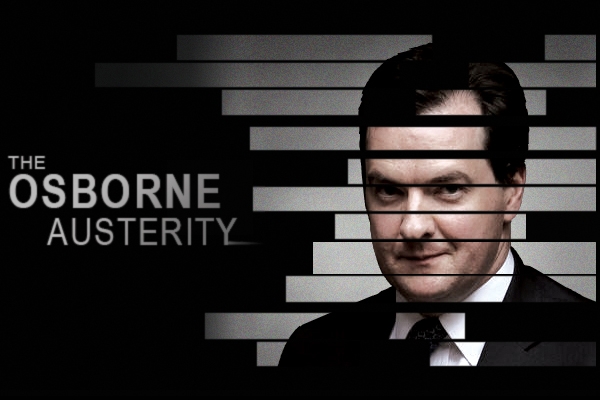If you think George Osborne has been a mad axe man, just wait to see the cuts he has planned for the next Parliament. To return a budget surplus by the end of the decade, government spending will have to be slashed — but which departments will bear the brunt of his axe?
The answer (shown in the above chart) is buried in the OBR’s report on the Autumn Statement. Assuming ring fences on health, education and overseas aid spending, ‘other’ departmental government spending stands to be slashed by 42 per cent, or £61.3 billion over the next five years. The Home Office, Ministry of Defence and Business Department would all be vulnerable.
As well as these cuts to the other line, there are only two areas where spending would rise: health spending is set to rise by £1.8 billion over five years — compared to the extra £8 billion Simon Stevens has said the NHS needs by 2020. Overseas aid would rise by 1.3 billion over five years, in line with the government’s target of 0.7 per cent of GDP. As this chart shows, it’s the other departments that look set to bear the brunt of cuts over the next few days:
 As the OBR says in the report, these project cuts would ‘pose a significant challenge if they were confirmed as firm policy, one that would be all the greater if existing protections were maintained’.
As the OBR says in the report, these project cuts would ‘pose a significant challenge if they were confirmed as firm policy, one that would be all the greater if existing protections were maintained’.
But does anyone believe the next government will make such rapid and deep cuts into public spending? As the IFS’s Paul Johnson put it earlier today:
‘It is surely incumbent upon anyone set on taking the size of the state to its smallest in many generations to tell us what that means. How will these cuts be implemented? What will local government, the defence force, the transport system, look like in this world? Is this a fundamental reimagining of the role of the state?’
When election season kicks off properly next year, all the political parties will have to explain whether they back this plan to reduce the deficit and where the spending cuts come from. And none of the answers will be politically easy for anyone.






Comments